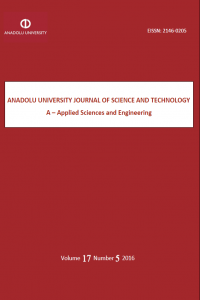THE COMBINED EFFECT OF ORGANIC PHOSPHINATE BASED FLAME RETARDANT AND ZINC BORATE ON THE FIRE BEHAVIOR OF POLY(BUTYLENE TEREPHTHALATE)
Abstract
Neat poly(butylene terephthalate) is highly combustible. It is not self-extinguishing, and after ignition it burns with dripping. To meet the fire safety requirements, it should be rendered flame retardant. The most common flame retardants for PBT are based on halogenated (most often brominated) or phosphorus compounds. Although their efficiency is lower than halogen based flame retardants, expensive phosphorus based flame retardants for polyester are preferred, because of low smoke generation, nontoxicity and low corrosion properties. Zinc borate has been widely used with other flame retardants in wood products and in several polymers. In this work the fire behavior of zinc borate, phosphinic acid and zinc borate/phosphinic acid combination doped poly(butylene terephthalate) was investigated. Firstly, the mean particle size of zinc borate (2ZnO.3B2O3.3.5H2O) powders were reduced by attrition milling. Samples were produced by twin screw micro compounder. The fire properties of the ZnB, DPA and ZnB/DPA doped PBT were investigated and compared to each other by LOI and thermal analysis. LOI values of ZnB/PBT samples were found very low even with higher filling content. At higher loading of ZnB, the dripping of the sample strongly decreased and char residue increased. It was seen that organic diethyl phosphinic acid based additives DPA is particularly effective with PBT. It was found that the combination of DPA and ZnB can be used to increase the char residue, decrease spread of flame and the melt dripping of PBT.
Details
| Subjects | Engineering |
|---|---|
| Journal Section | Articles |
| Authors | |
| Publication Date | December 20, 2016 |
| Published in Issue | Year 2016 Volume: 17 Issue: 5 |


